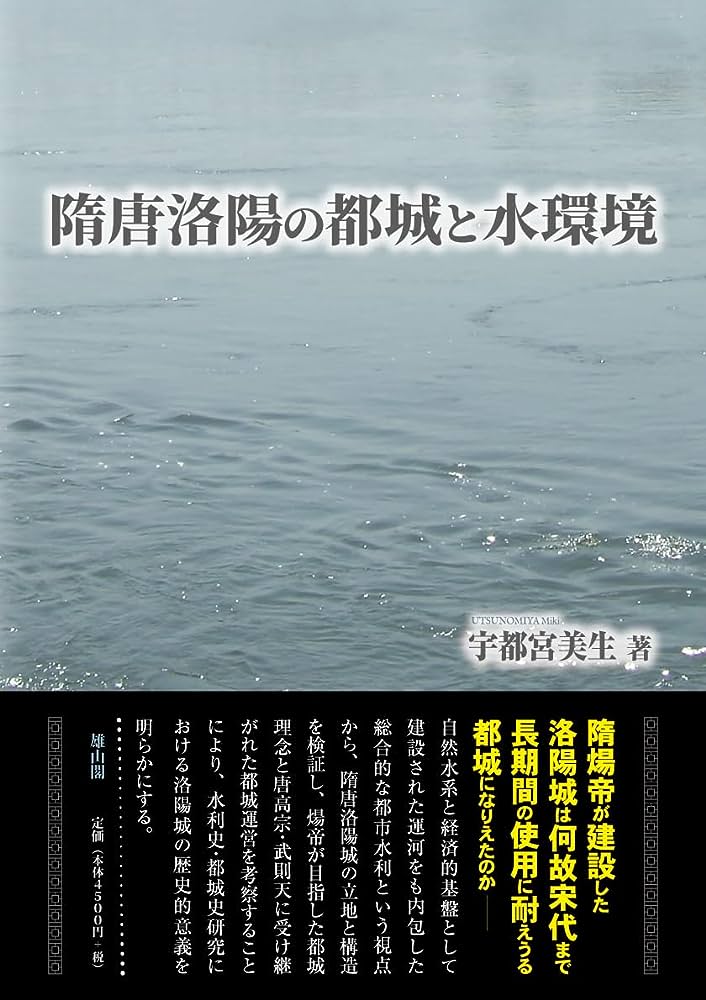
Title
Zui-Tou Rakuyou no Tojyo to Mizu-kankyo (The Capital City Luoyang during the Sui-Tang Period and Its Water Environment)
Size
368 pages, A5 format, softcover
Language
Japanese
Released
June 25, 2023
ISBN
9784639029144
Published by
Yuzankaku
Book Info
See Book Availability at Library
Japanese Page
Which cities come to mind at the mention of China’s former capital cities? Many Japanese will probably think of Chang’an during the Sui and Tang periods, where Japanese embassies were sent and which had a similar structure to Japan’s former capital cities of Heijōkyō and Heiankyō. During the Sui-Tang period Luoyang did in fact possess the functions of a capital, and a dual capital system was operating. This dual capital system, with the twin capital cities of Chang’an and Luoyang, can in fact be traced back as far as the Zhou period, and it was widely recognized in China that Chang’an was the centre of government and military affairs while Luoyang was the centre of the economy and culture, which meant that Luoyang, too, was an important capital city. However, in Japan there has been a strong interest in Chang’an, and coupled with the increasing depth of research on Chang’an around the world, there has been a dearth of knowledge about Luoyang. A turning point came with the construction boom that unfolded across China from the late 1990s to the first decade of this century. In conjunction with this construction boom, archaeological investigations were actively undertaken in Luoyang, and many new discoveries were made. Currently research on Luoyang has reached the stage of making use of these archaeological findings, but at the moment they remain at the level of corroborating existing views or undertaking fresh examinations of Luoyang’s structure. I carried out fieldwork in Luoyang at the height of the construction boom, and in the course of this fieldwork I realized that the structure of the city of Luoyang was related to water. This book is the result of my investigations, undertaken with my “feet” and “eyes,” and joins up many dots to provide an overall picture of Luoyang.
The city of Luoyang during the Sui-Tang period differed markedly from Chang’an in that it was not symmetrical but trapezoid in shape and a large natural river and the Grand Canal were incorporated into the city. Why did Luoyang come to have this structure? And why was it possible for the city of Luoyang, built by the emperor Yangdi of the Sui, to become a capital city able to hold up to long-term use until the Song period? This book focuses on Luoyang’s water environment to draw out some of its distinctive features. Individual chapters are organically linked, and the book is structured in such a way that it is possible to gain an overall picture on the basis of a consistent theory. The location and structure of Luoyang during the Sui-Tang period are examined from the perspective of its comprehensive urban water utilization, which encompassed both the natural water system and canals constructed as an economic base, and the historical significance of Luoyang in the study of the history of water utilization and the history of capital cities is clarified by considering Yangdi’s ideas for a capital city and its management carried over by the emperor Gaozong and Empress Wu Zetian of the Tang.
It is hoped that the makeup of Luoyang as deduced by my distinctive powers of observation and perspective will be shared with many people and that, with this book as a start, the ancient capitals of Japan and China will be considered from the vantage point of their infrastructure in the form of “water” and fresh views will be put forward. It is to be further hoped that by this means it will be possible to compare capital cities and bring together material for examining the notions by which people lived their lives at the time.
(Written by: UTSUNOMIYA Miki / September 01, 2023)
Related Info
The 4th UTokyo Jiritsu Award for Early Career Academics (The University of Tokyo 2023)
https://www.u-tokyo.ac.jp/ja/research/systems-data/n03_kankojosei.html



